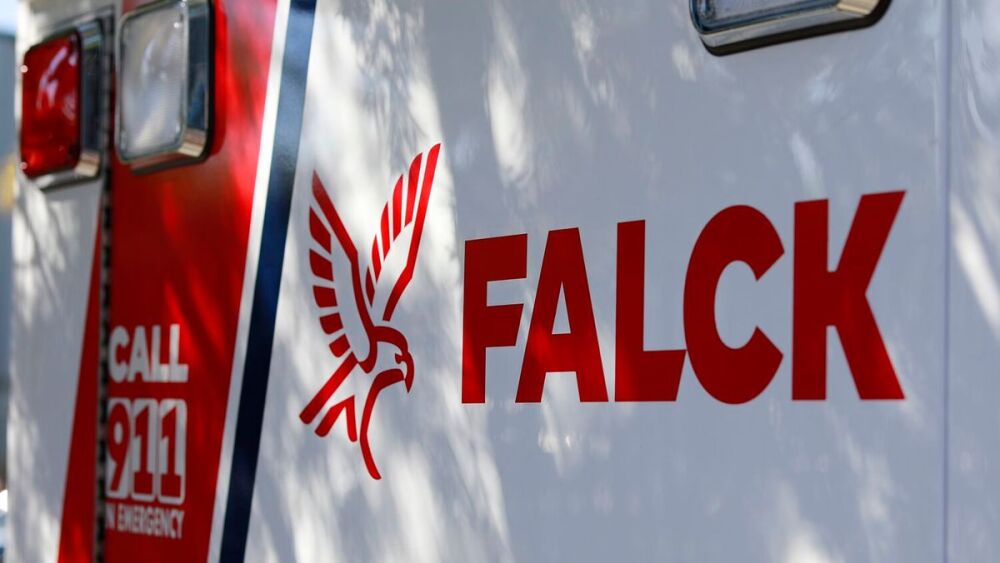By David Garrick
The San Diego Union-Tribune
SAN DIEGO — San Diego officials say their plan to take more control over city ambulance service is projected to generate $5 million a year in excess cash they intend to spend on new programs like nurse triage, telemedicine and street-based interventions.
The primary goal of the city’s plan to take more control, which the City Council’s Public Safety Committee approved unanimously Wednesday, is cutting response times by making sure there are enough ambulances on the road each day.
But new financial projections unveiled this week show the city’s plan may also generate cash for innovations that could further improve response times.
A proposed three-year deal with two private ambulance providers is projected to generate $15 million in surplus cash: $6.5 during the ongoing fiscal year, another $3 million in fiscal year 2025 and $5.5 million in fiscal 2026.
It became significantly more lucrative for cities and counties to take control of their ambulance service in January, when a new state law tripled Medicare and Medi-Cal reimbursement rates for government agencies compared to private providers.
Fire Chief Colin Stowell said he hopes to spend some of the new money on a nurse triage or nurse navigation program, where a state-licensed nurse would determine which 9-1-1 calls need an ambulance response and which need less urgent attention.
Sending fewer ambulances to relatively minor calls where they aren’t necessary would free up more ambulances for crucial calls where a quick ambulance transport can make the difference between life and death.
“We see nurse navigation as an integral part of our service delivery model,” Stowell said about his long-term plans for city ambulance service.
Stowell also mentioned adding telemedicine to city ambulance service. And Councilmember Marni von Wilpert said she’d like to see some of the new money spent on street triage, where health care workers focus on frequent 9-1-1 callers.
The money for the possible new programs would come from a fundamental shift in city ambulance service toward a new system known as the alliance model.
Instead of the existing model where private ambulance provider Falck USA pays San Diego $9 million a year for the right to charge patients, the city would pay Falck and another provider $65.5 million total to operate ambulances and would get the right to charge patients itself.
City officials estimate patient charges would total $94.4 million per year, leaving $28.9 million in surplus cash. But the projected surplus shrinks when officials account for losing the current $9 million fee from Falck and adding some new expenses — including payment to hospitals and the costs to bill customers.
The Public Safety Committee approved Wednesday a two-year contract for nearly $8 million with Wittman Enterprises, a company that handles billing for 121 government agencies in California, including Oceanside, Carlsbad and Escondido.
Wittman officials told the city the company has increased its staff from 186 to 240 in preparation for taking on ambulance billing in San Diego.
While the new model is projected to generate cash for the city, it shifts the financial risk from Falck to the city’s general fund if expenses outpace revenues.
The city’s independent budget analyst is scheduled to release a report on those risks next week, before the full City Council is expected to give final approval to the new model on July 31 or Aug. 1.
Stowell acknowledged the city faces some risk.
“The first 12 months is very critical for us,” he said. “Are these projections on the revenue and expenditure sides accurate? If they are, is this the model we should look at moving forward?”
San Diego last year considered bringing ambulance service fully in-house, which is how Los Angeles, San Francisco and Chula Vista handle it.
City officials say they plan to issue a new call for ambulance contractors after they’ve had time to analyze the alliance model.
But officials hailed the new model Wednesday as something that they expect to stabilize city ambulance service in the long term after years of frustration over poor response times and staffing issues, particularly a chronic shortage of paramedics.
“Over the decades, every private ambulance transportation provider has struggled to deliver the level of service the city has desired,” said Assistant Fire Chief Jodie Pierce. “Implementing an alliance model will break the cycle and allow the city to control and set the number of unit hours each day, including their deployment and re-allocate unit hours as necessary.”
Falck would provide more than 90 percent of city ambulance service under the new model, 816 hours per day. American Medical Response would provide an additional 72 hours per day.
The city’s plan to shift to a new model comes after many months of Falck falling far short of the staffing and response-time promises it made to the city when it took over ambulance service in November 2021.
But Falck recently began meeting city goals, primarily because the company has alleviated staffing shortages with $50,000 signing bonuses and 17 percent pay hikes over three years for ambulance workers.
Company officials said Wednesday that Falck has hired 74 paramedics in seven months. In July, the company’s average number of ambulance hours per day has been higher than the goal of 900 in its city contract, they said.
“We support the new alliance model and are proud to continue as the primary ambulance provider for the city,” said Falck spokesperson Jeff Lucia.
The new model includes penalties if Falck or AMR falls short of ambulance hour goals. In addition, if monthly averages aren’t met, the deal allows the city to shift hours between the two providers. Both companies would be paid $218 per ambulance hour.
©2023 The San Diego Union-Tribune.
Visit sandiegouniontribune.com.
Distributed by Tribune Content Agency, LLC.












